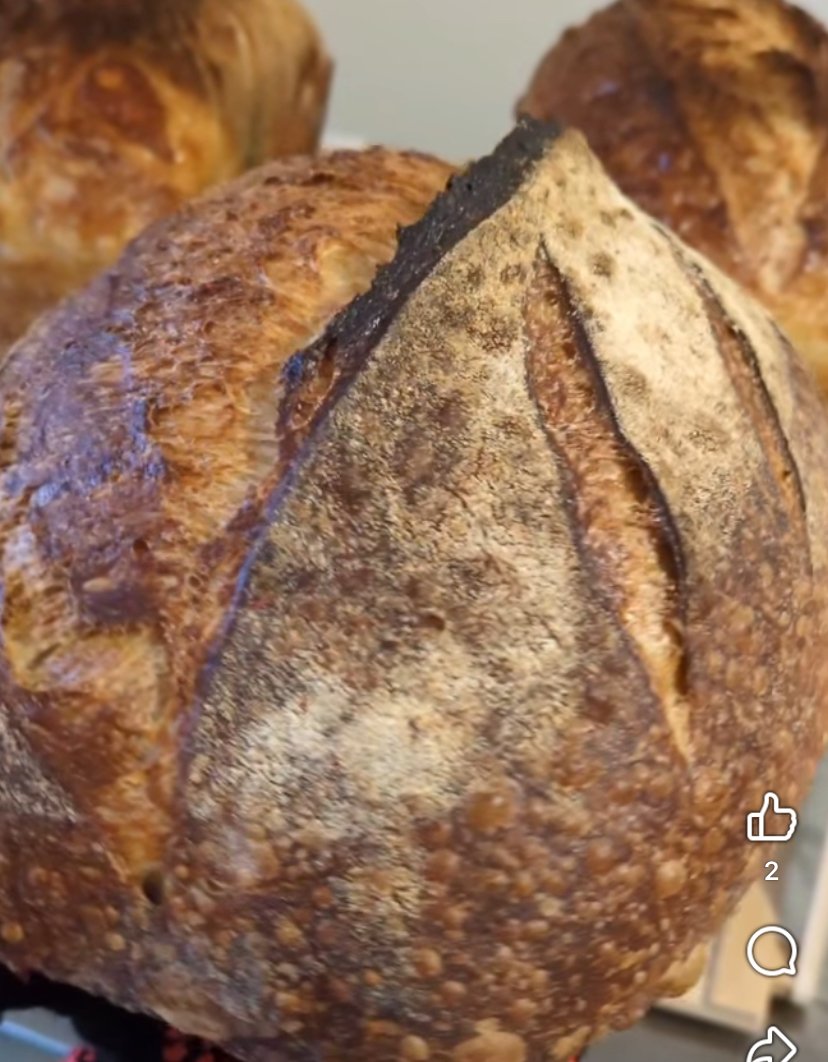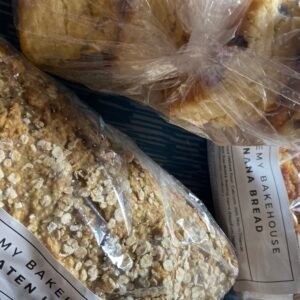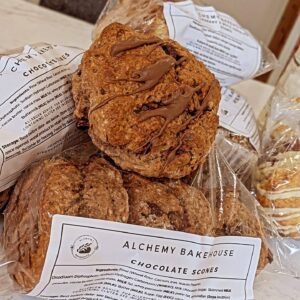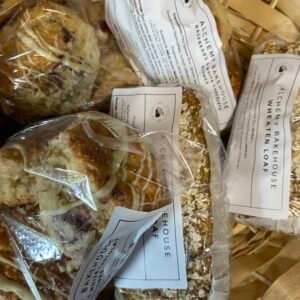Description
Delicious home made sourdough bread.
🥖 Sourdough Bread: A Tangy Classic with Ancient Roots
Sourdough bread is a naturally leavened bread known for its chewy texture, crisp crust, and distinctive tangy flavor. Unlike breads made with commercial yeast, sourdough relies on a fermented mixture of flour and water—called a starter—which cultivates wild yeast and beneficial bacteria over time.
🌾 Key Characteristics
- Ingredients: Just flour, water, and salt—plus time and patience.
- Flavor: Mildly sour due to lactic and acetic acids produced during fermentation.
- Texture: Crusty exterior with a soft, airy interior full of irregular holes.
- Leavening: Uses wild yeast and lactobacilli instead of baker’s yeast.
🧬 How It Works
- The starter ferments over several days, developing a colony of wild yeast and bacteria.
- These microbes produce carbon dioxide, which causes the dough to rise.
- The acids created during fermentation give sourdough its signature tang and help preserve the bread naturally.
🕰️ A Slice of History
- Sourdough is one of the oldest forms of bread, dating back to ancient Egypt and the Fertile Crescent.
- It was the standard method of breadmaking until the rise of commercial yeast in the 19th century.
- San Francisco sourdough is especially famous, thanks to its unique local strains of yeast and bacteria.
💪 Health Benefits
- Easier to digest due to partial breakdown of gluten during fermentation.
- May support gut health and blood sugar management.
- Often more nutritious than conventional bread, especially when made with whole grains





